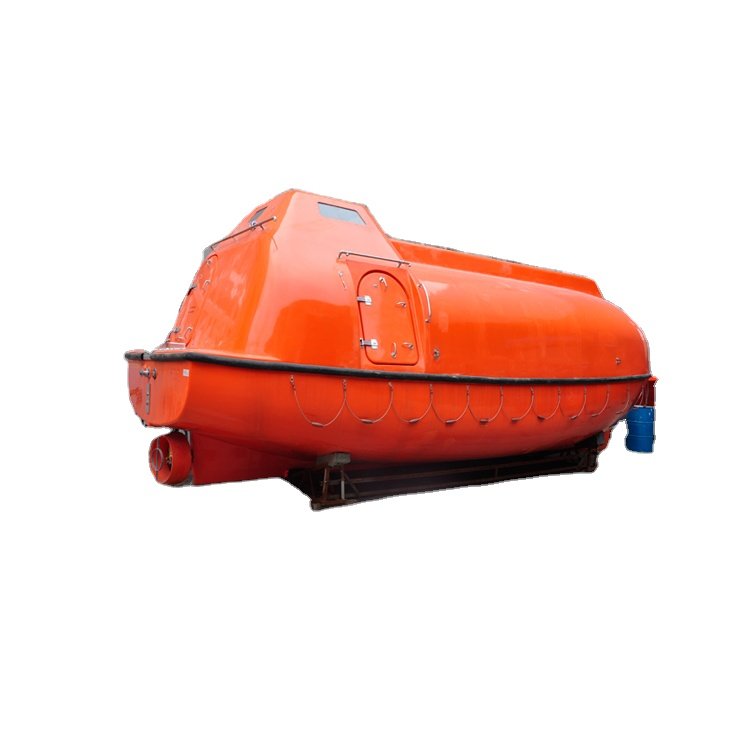Implementing Cost-efficient Solutions in Marine Lifeboats
Lifeboats are essential safety devices on ships, designed to ensure the survival of crew members and passengers during emergencies. While safety is of utmost importance, the maritime industry also needs to manage costs effectively. Implementing cost-efficient solutions in marine lifeboats is crucial for upholding safety standards while controlling expenses in the maritime sector.

Key Strategies for Cost-Effective Marine Lifeboats
1. Innovative Materials and Design
a. High-Strength Lightweight Materials
Utilizing high-strength, lightweight materials such as reinforced fiberglass, aluminum alloys, and advanced composites can significantly reduce the weight of lifeboats. These materials are not only durable but also require less maintenance, leading to long-term savings.
Cost Benefits: Lighter materials decrease fuel consumption during operations, and their durability reduces the frequency and cost of repairs.
b. Modular Design
Lifeboats with modular designs allow for easy assembly, disassembly, and repairs. This approach simplifies the manufacturing process and reduces labor costs.
Cost Benefits: Modular components can be replaced individually, reducing the need for complete overhauls and minimizing downtime for repairs.
c. Simplified Hull Shapes
Simplifying the hull shape of lifeboats can reduce production costs by minimizing manufacturing complexity. Streamlined shapes also improve hydrodynamic performance, lowering fuel consumption during towing or deployment.
Cost Benefits: Reduced manufacturing complexity leads to lower production costs, while improved efficiency reduces operational expenses.
2. Efficient Production Techniques
a. Automation in Manufacturing
Incorporating automation in lifeboat production, such as robotic welding and automated assembly lines, can significantly reduce labor costs and increase production speed.
Cost Benefits: Automation ensures consistent quality, fewer errors, and lower labor costs, resulting in cost-effective production.
b. Bulk Purchasing and Standardization
Standardizing components across different marine lifeboat models and purchasing materials in bulk can lead to substantial cost savings. This strategy also simplifies inventory management and reduces lead times.
Cost Benefits: Bulk purchasing reduces material costs, and standardization lowers production and maintenance expenses.
c. Outsourcing and Collaboration
Outsourcing certain components or collaborating with specialized suppliers can reduce costs while maintaining high quality. By focusing on core competencies, manufacturers can achieve economies of scale.
Cost Benefits: Leveraging the expertise and economies of scale of specialized suppliers reduces production costs without compromising quality.
3. Low-Maintenance Features
a. Corrosion-Resistant Coatings
Applying advanced corrosion-resistant coatings to lifeboat surfaces and components can extend their lifespan and reduce the need for frequent maintenance.
Cost Benefits: Reduced maintenance frequency and extended lifeboat life lead to lower long-term costs.
b. Simple Mechanical Systems
Lifeboats equipped with simple, robust mechanical systems are less prone to failure and easier to repair. Reducing the complexity of these systems lowers both initial and ongoing maintenance costs.
Cost Benefits: Simpler systems reduce the likelihood of costly breakdowns and simplify repairs, leading to cost savings.
c. Durable Seating and Interiors
Using durable, easy-to-clean materials for seating and interiors reduces wear and tear, minimizing the need for replacements and cleaning.
Cost Benefits: Long-lasting interiors reduce the frequency of refurbishments and lower overall maintenance costs.
4. Energy-Efficient Technologies
a. Solar-Powered Systems
Integrating solar-powered lighting and communication systems into lifeboats reduces reliance on batteries or fuel-based power sources, lowering operational costs.
Cost Benefits: Solar power reduces energy costs and extends the life of onboard power systems, decreasing the need for frequent replacements.
b. Low-Emission Engines
Equipping lifeboats with low-emission, fuel-efficient engines reduces fuel consumption and operating costs while meeting environmental regulations.
Cost Benefits: Fuel-efficient engines lower fuel expenses and help avoid penalties for non-compliance with emission standards.
c. Hybrid Power Systems
Hybrid power systems combining traditional engines with electric motors offer cost-effective propulsion while reducing fuel consumption and emissions.
Cost Benefits: Hybrid systems provide long-term savings on fuel and maintenance and may qualify for environmental incentives.
5. Lifecycle Cost Management
a. Total Cost of Ownership (TCO) Analysis
Conducting a TCO analysis helps maritime operators understand the full cost implications of different lifeboat models, including purchase price, maintenance, fuel, and operational costs over the boat’s lifecycle.
Cost Benefits: TCO analysis enables more informed purchasing decisions, potentially leading to significant long-term savings.
b. Refurbishment and Upgrading
Refurbishing existing lifeboats or upgrading them with modern safety features can be more cost-effective than purchasing new ones. Upgrades may include installing new communication systems, retrofitting engines, or adding safety enhancements.
Cost Benefits: Refurbishment extends the service life of lifeboats and reduces the need for large capital expenditures.
c. Leasing and Financing Options
Exploring leasing or financing options can spread the cost of lifeboats over time, allowing operators to manage their budgets while still accessing high-quality equipment.
Cost Benefits: Leasing reduces upfront costs and provides flexibility to upgrade to newer models as needed.

Conclusion
Implementing cost-effective solutions in marine lifeboats involves a combination of innovative design, efficient production techniques, low-maintenance features, and energy-efficient technologies. These strategies not only benefit the bottom line but also enhance the overall safety and sustainability of marine operations.
- Art
- Causes
- Crafts
- Dance
- Drinks
- Film
- Fitness
- Food
- Jogos
- Gardening
- Health
- Início
- Literature
- Music
- Networking
- Outro
- Party
- Religion
- Shopping
- Sports
- Theater
- Wellness


